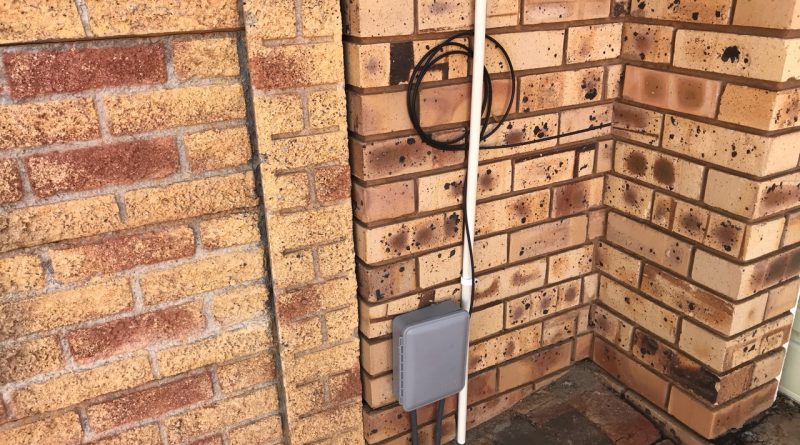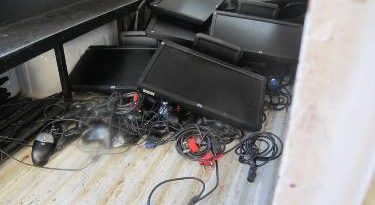Fibre to the Home – What you need to know before you sign up with an ISP
Fibre to the home (FTTH) is rolling out in suburbs across South Africa at a rapid rate, promising lightning fast internet speeds, a world of connectivity and online in-home entertainment options not yet experienced since the Jurassic Park advent of copper lines and ADSL.
Once you get over the trenching, messy pavements and lumpy driveways courtesy of the fibre infrastructure provider, and you’ve done your homework on the best internet service provider (ISP) to provide the actual interconnectivity via your fibre line – Netflix binges become a reality, along with a veritable treasure chest of YouTube and Google knowledge, music and movie downloads, online gaming, skype chats with far-flung family and friends, lighting fast downloads and uploads and cloud storage and back-up for your documents, photos and videos – you name it and the internet becomes your oyster.
Linda Morris of Smart Technology Centre (STC), a leading internet service provider and IT technology partner says that an internet connection that delivers on speed, availability, security and data integrity is no longer a ‘nice to have’ option at home, but has now become a necessity in our tech-driven lives.
“Fibre to the home opens up a world of entertainment, education and learning, music, transacting, work-from-home flexibility, security and remote monitoring, and IoT for connected devices that are all increasingly fundamental to our daily lives. Your computer, smart phone, TV, tablet and even your home appliances like fridges and security camera systems are increasingly using data and requiring high-speed internet connectivity. FTTH is becoming an essential utility, much like water and electricity,” says Linda.
“Of course, the proviso to all of this working flawlessly comes with one really important caveat –choosing the right internet service provider (ISP) before you sign. While it’s true that the steps to getting fibre to your home are not always plain sailing, as there are many role players and steps involved, knowing what to expect, who is involved in the process, and what the important things are to look out for will streamline the process considerably,” explains Linda.
Smart Technology Centre provides some key pointers on what to expect when getting FTTH:
Installing the infrastructure
- Once your suburb is approved for fibre and the necessary wayleaves have been granted by the local council, the infrastructure provider commences building the backbone network – this is typically a fibre ring which feeds the fibre from a centrally placed distribution node to every block in the suburb.
- This is where the trenching of pavements and driveways begins – and many residents tend to lose their sense of humour, albeit temporarily. Infrastructure providers do go to great lengths to restore the area to its original state and within a few weeks of completion, your pavement and driveway should be back to normal.
- Each street in the suburb is then linked up to the backbone network and gets ‘fibred’. As each customer signs up for service, the fibre is then taken from the distribution box on the street boundary wall to a point inside your home, typically following the shortest route possible.
- Finally, your chosen Internet Service Provider (ISP) who provides your internet connectivity and bills you every month for the service, will install a Wi-Fi router in your home and get you connected to the internet.
It’s really important to point out that ISPs are not all equal in terms of service, pricing, back-up and support and quality of connection. Smart Technology Centre provides the following tips and questions to ask before you sign up with an ISP:
- Equipment: Does the ISP package include the cost of a Wi-Fi router and installation or is this an additional once off cost? Every ISP has a different way of entering into an agreement with you. Some will provide the fibre router that you need to connect to the port in your wall at no extra cost if you sign a contract for a set period. Others will only provide the service with no set contract and operate on a month-to-month basis – you will need to purchase the fibre router at an additional cost. Note that any existing ADSL or LTE Wi-Fi router that you may have will not work on a fibre line as the technology is different. It is also important that not all Wi-Fi routers are the same, the less expensive options typically have a smaller throughput for bandwidth.
- Installation: Does your ISP complete the set-up process for you? Unless you’re a tech-fundi, get your ISP to install the router and connect it to the fibre and make sure it’s working correctly and protected with passwords so only authorised people can hop onto your home network. To distribute wireless within your home, you may want to consider adding access points to extend the range of the wireless network from the router. Get your ISP to check and advise you accordingly. It may even be preferable to install LAN cables from the router to connect to your access points, XBOX or Smart TV. This is where most ISPs really differentiate, in that the majority do not offer home support, or advice on how to obtain the maximum benefit from your fibre connection within your smart home.
- Support: It is important to consider the level of support you can expect post installation. Look at whether your ISP has a call centre available to field support calls, or any other way that you can engage in the event of a problem or technical query.
- What line speed do I need? You have a choice of how fast you want your line to be. This is measured in Megabits per Second (Mbps) ranging from anything between 10 – 100 Mbps. Bear in mind that the faster the line, the higher the cost. As a good rule of thumb, look at what your current connection speed is and what you will be using the line for to decide what will work optimally for your home. If you’re not into TV streaming, online gaming or downloading and uploading big files, a 10mbps line will do, but if you’re internet-hungry you may want a much faster internet connection at 50 or even 100Mbps. The number of devices using the connection also matters – the more connected devices, the greater the line speed to accommodate all the traffic. Also check whether you can you easily upgrade to a higher line speed in a matter of minutes if your needs change, or will you be bound for the duration of the contract before you can upgrade? Does your ISP offer symmetrical upload and download speeds – if you have a 50meg line, are your upload and download speeds the same?
- Data: You also have a choice on the amount of data you want access to a month. Your ISP will typically give the option of a capped line where you can choose data bundles or an uncapped line that has no limit. Cost once again comes into play in this decision. If you are just planning on surfing the web to look at photos and listen to the odd song or two, a capped line will work. A capped package means your data will be limited and once you reach it, you will need to top up, usually at a higher out-of-package rate. If you are planning on streaming movies, gaming, using entertainment portals like Netflix and so on, an uncapped line will serve you better. While some ISPs provide an uncapped package, they may have a ‘fair usage’ policy that ‘throttles’ your speed if you overshoot their fair usage limits. An uncapped package gives you far more flexibility, and typically is cheaper than your capped packages, albeit may be a small speed. Most ISPs have an online portal which lets you see how much data you’re using.
- What are the contention ratios like? Low contention ratios ensure a higher quality of service because there are less subscribers using the same line.
“Be wary of basing your entire ISP decision on the first available connection date or price. Each FTTH provider is affiliated with one or several Internet Service Providers (ISPs) that will actually manage your fibre line connection. The ISP you choose will ultimately shape what your fibre line will deliver, such as the speed of the line, whether it is capped or not, the back-up you will receive and monthly cost,” explains Linda.
“The fact that South Africa’s fibre network is mostly built on the principles of open access means that you have a choice as a consumer of who you want your FTTH provider or ISP to be. You have the ability to change either of the two if infrastructure in your area allows, which leaves fibre users absolutely spoilt for choice, shifting the power to the consumer,” concludes Linda.
For more information go to https://www.stc.za.com/ftth/




